With its vibrant green plumage and captivating behaviors, the Asian Green Bee-Eater stands out as a remarkable member of the avian kingdom.
Belonging to the bee-eater family, these slender birds are found in parts of Asia and sub-Saharan Africa, offering a dazzling sight with their shimmering appearance under sunlight.
Renowned for their adept hunting skills, particularly in catching bees, they exhibit impressive social dynamics, often residing in colonies near water bodies or human settlements.
Beyond their hunting prowess, they showcase communal solid bonds and intricate communication methods reminiscent of human societies.
Join us as we embark on a journey to explore the intriguing world of the Asian Green Bee-Eater and uncover the wonders of its existence.
Key Facts About the Asian Green Bee-Eater
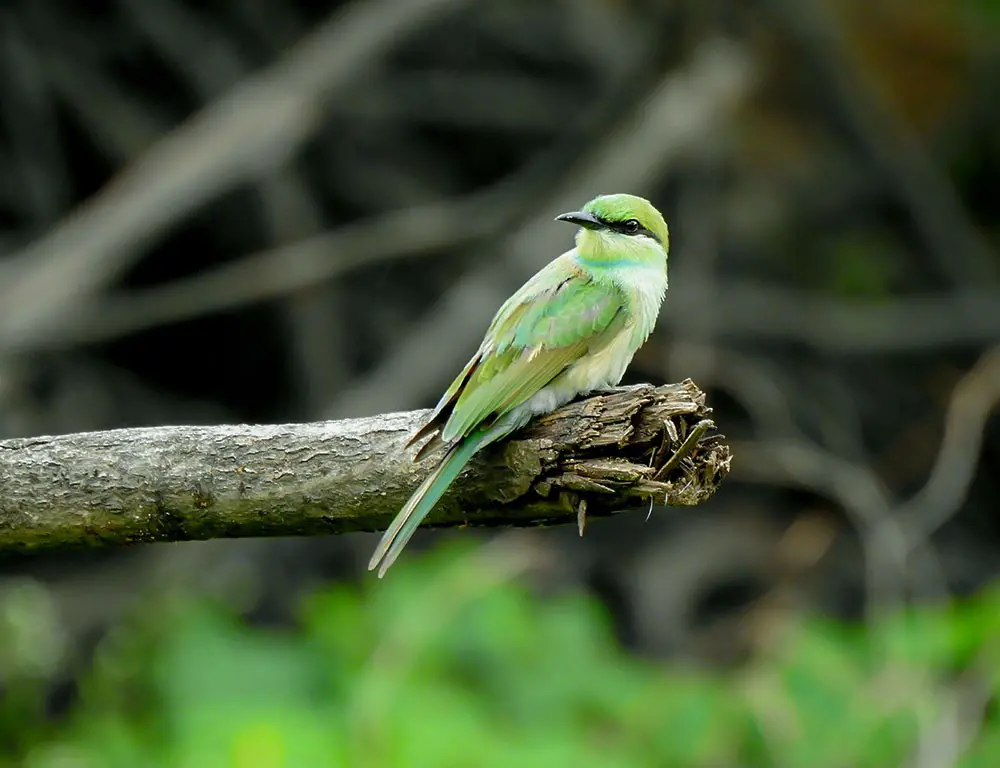
The Asian Green Bee-Eater (Merops orientalis) is a striking bird found across a vast expanse of Asia, known for its vibrant green plumage and unique feeding habits.
This slender bird with elongated tail feathers primarily preys on bees, wasps, and hornets, which are crucial in controlling pest populations.
Its preferred habitats include open country areas such as grasslands and scrublands, where it can display its agile flight skills while hunting.
These birds nest in tunnel-like structures on sandy banks or low mud walls, showcasing their unique nesting behavior. Their geographical range spans West Asia through the Indian subcontinent to Southeast Asia.
Here are some key facts about the Asian Green Bee-Eater:
- Scientific Name: Merops orientalis
- Diet: Bees, wasps, hornets
- Habitat: Grasslands, scrublands
- Range: West Asia to Southeast Asia
- Nesting: Tunnel-like structures in sandy banks or mud walls
Physical Characteristics of the Asian Green Bee-Eater
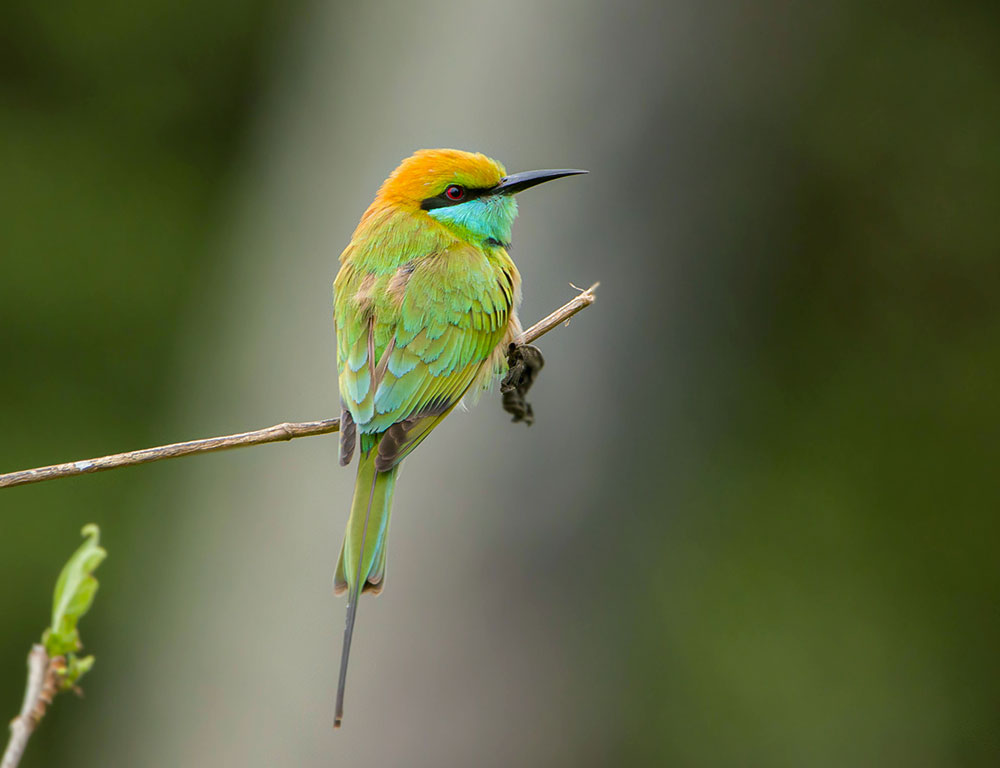
The Asian Green Bee-Eater, scientifically known as Merops orientalis, possesses a striking appearance that distinguishes it from other bird species.
Here are its critical physical characteristics:
Size
On average, the Asian Green Bee-Eater stands around 9 inches tall, making it relatively small compared to other birds.
Plumage
Its plumage is characterized by vibrant shades of green and turquoise, creating a visually captivating appearance.
Tail
The bird’s long tail accounts for almost two-thirds of its body length, contributing to its slender and elegant silhouette.
Head
The head of the Asian Green Bee-Eater features a distinctive black ‘mask’ encircling its eyes and beak, creating a stark contrast against its bright green body.
Beak
The beak is long and curved, specifically adapted for capturing and consuming insects, which form the primary component of its diet. This includes bees, wasps, and dragonflies.
Mating Season Feature
During mating season, male Asian Green Bee-Eaters develop two special feathers on each side of their tail, known as “pin feathers,” which can grow up to 2 inches longer than the rest of their tail feathers. This feature likely plays a role in courtship displays and mate attraction.
Habitat and Distribution of the Asian Green Bee-Eater
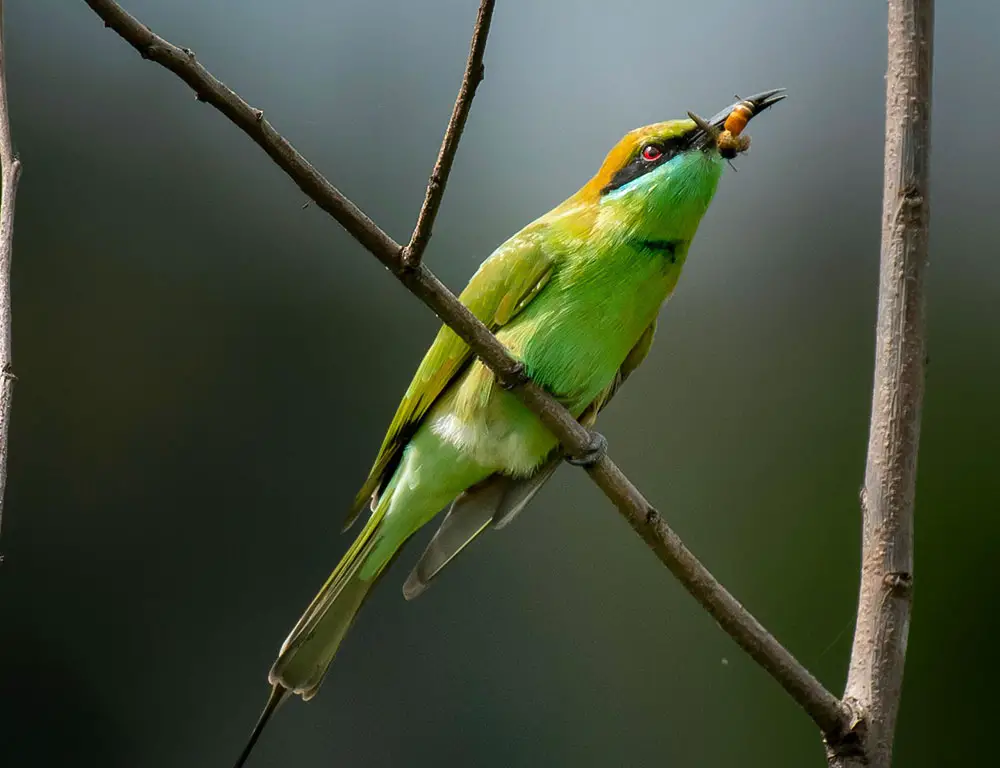
The Asian Green Bee-Eater, with its vast geographical range, showcases adaptability in its habitat preferences. Here’s a breakdown of its habitat and distribution:
Geographical Range
Asian Green Bee-Eaters are primarily found across a vast expanse stretching from the Middle East to Vietnam. They also inhabit scattered regions in parts of Africa and India.
Preferred Habitat
These birds thrive in open plains and lightly wooded areas. They prefer habitats where they can freely maneuver in flight to catch their insect prey. Dense forests and high-altitude regions are typically avoided.
Nesting Sites
Asian Green Bee-Eaters are ground-dwelling creatures that nest in vertical sandbanks. They dig tunnels into these sandy cliffs to lay their eggs. Riverbanks and sandy cliffs are prime locations for finding their nests.
Migratory Behavior
As migratory birds, Asian Green Bee-Eaters are not averse to traveling when necessary. They may change their location based on seasonal factors such as weather patterns and food availability. This behavior allows them to adapt to changing environmental conditions.
Diet and Feeding Habits of the Asian Green Bee-Eater
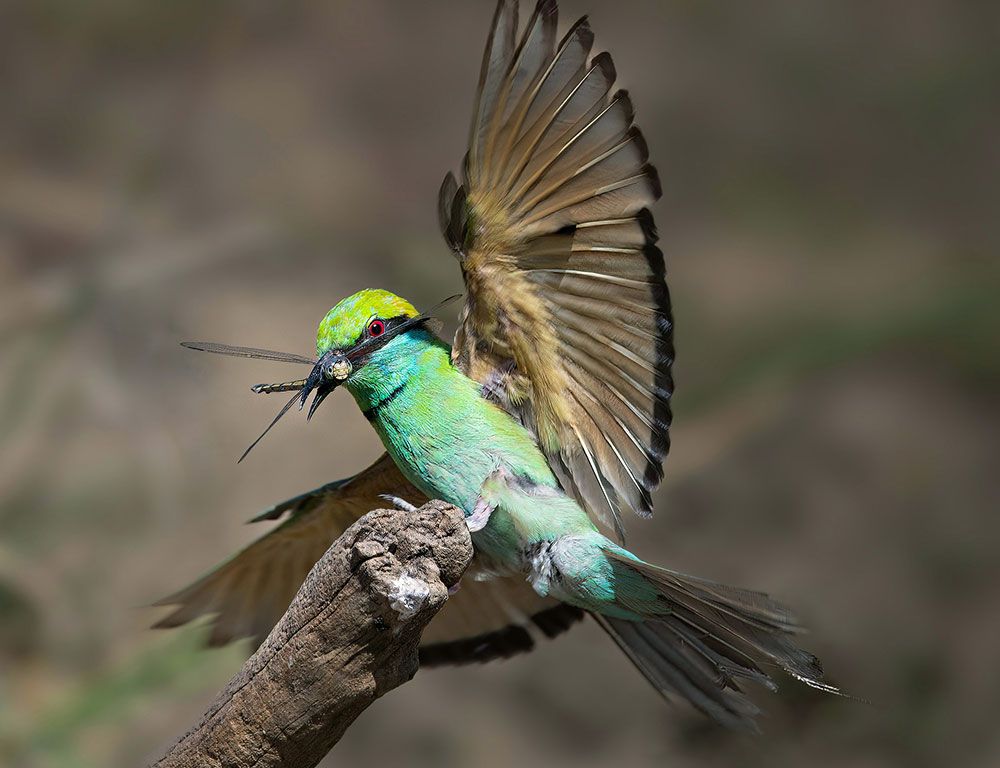
The Asian Green Bee-Eater’s diet and feeding habits are as fascinating as its appearance. Here’s a detailed look at its feeding behavior:
Diet Composition
The Asian Green Bee-Eater primarily feeds on insects, with a preference for bees, constituting about 30% of its diet. Wasps comprise around 25%, while flies and other insects contribute 45%.
Additionally, they occasionally consume fruits or seeds, showcasing omnivorous tendencies.
Feeding Technique
These birds display remarkable agility and skill in catching prey mid-flight. They swoop down from perches with precision to snatch unsuspecting insects in their beaks. This behavior requires exceptional aerial maneuverability and quick reflexes.
Debilitation of Prey
Before consuming stinging insects like bees and wasps, Asian Green Bee-Eaters exhibit fascinating behavior. They rub the captured insect against a hard surface, often a branch, to debilitate it.
This action serves to remove the stinger and venom sac, ensuring safe consumption of the prey.
Omnivorous Nature
While primarily insectivorous, Asian Green Bee-Eaters are not strictly limited to insects. Their diet flexibility allows them to occasionally supplement their intake with fruits or seeds, demonstrating an omnivorous dietary behavior.
Breeding Behavior of Asian Green Bee-Eaters
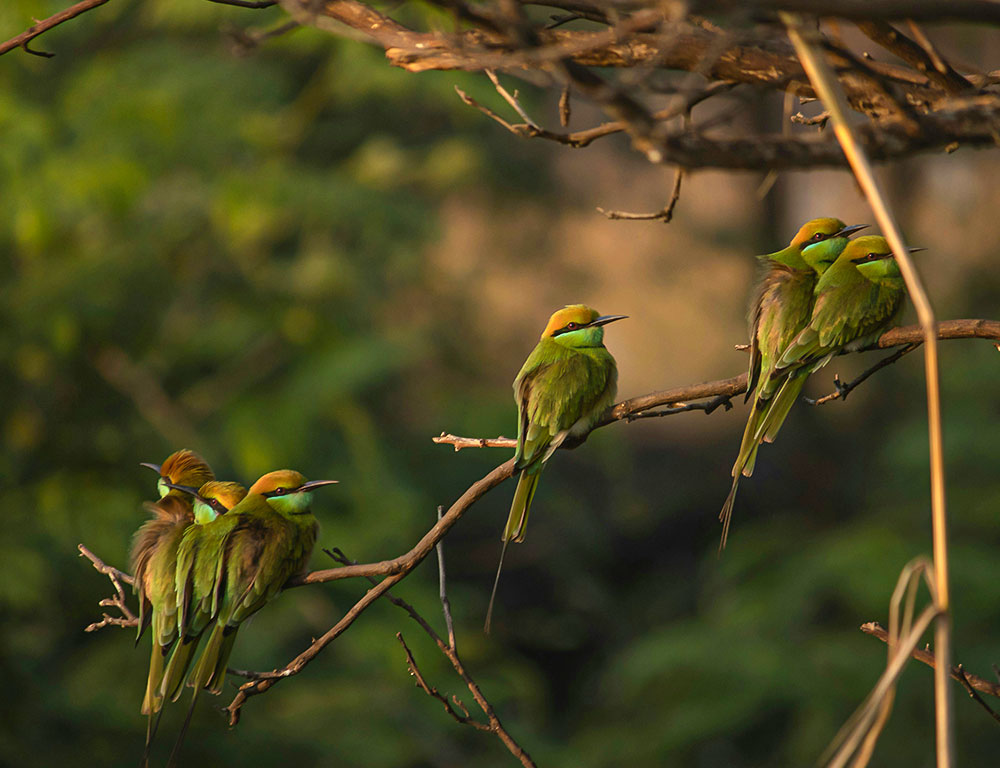
The breeding behavior of Asian Green Bee-Eaters is a fascinating and intricate process that highlights their unique role in the avian kingdom.
Here’s an overview of their breeding behavior:
Mating Season Rituals
Mating season for Asian Green Bee-Eaters typically occurs from March to June. During this time, male bee-eaters display courtship, often presenting insects to females.
This behavior showcases the male’s hunting skills and ability to provide for potential offspring, playing a crucial role in mate selection.
Nesting Habits
After courtship, the breeding pair constructs their nest in sandy banks or flat ground, often near riverbeds. They dig burrows, which can be up to 5 feet long, to create a cozy environment for nesting. The female lays 4 to 7 glossy white eggs inside the burrow.
Incubation
Both male and female bee-eaters share incubation duties, taking turns to warm the eggs. Incubation typically lasts for approximately three weeks until the eggs hatch. This shared responsibility highlights the cooperative nature of parental care in Asian Green Bee Eaters.
Chick Rearing
Upon hatching, the young chicks depend entirely on their parents for food and protection. Both parents diligently care for the chicks, providing them with insects for nourishment.
This period of intensive care lasts for about a month until the chicks are ready to fledge and begin their independent lives.
Conclusion
The Asian Green Bee-Eater emerges as a captivating symbol of adaptation and resilience in the diverse tapestry of our natural world.
From their vibrant plumage to their ingenious hunting techniques and monogamous breeding habits, these birds captivate with their unique blend of beauty and behavioral intricacies.
Despite facing threats like habitat destruction, their stable population trend offers hope for their continued existence. As stewards of our planet, it’s essential to recognize the significance of every species in maintaining ecological balance.
By understanding and respecting creatures like the Asian Green Bee-Eater, we embrace our role as responsible inhabitants of Earth.
So, let us marvel at nature’s wonders and appreciate these remarkable birds’ invaluable contributions, reminding us of the interconnectedness and fragility of life on our planet.